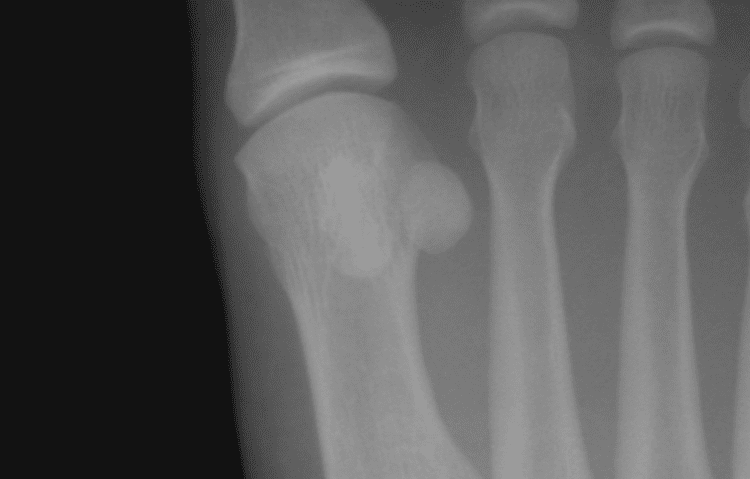In anatomy, a sesamoid bone (/ˈsɛsəmɔɪd/) is a bone embedded within a tendon or a muscle. It is derived from the Latin word "sesamum" (sesame seed), due to the small size of most sesamoids. Often, these bones form in response to strain. Sesamoids act like pulleys, providing a smooth surface for tendons to slide over, increasing the tendon's ability to transmit muscular forces.
Sesamoid bones can be found on joints throughout the body, including:
In the knee — the patella (within the quadriceps tendon). This is the largest sesamoid bone.In the hand — two sesamoid bones are commonly found in the distal portions of the first metacarpal bone (within the tendons of adductor pollicis and flexor pollicis brevis). There is also commonly a sesamoid bone in distal portions of the second metacarpal bone.In the wrist - The pisiform of the wrist is a sesamoid bone (within the tendon of flexor carpi ulnaris). It is not present at birth and generally develops in children ages 9–12.In the foot - the first metatarsal bone usually has two sesamoid bones at its connection to the big toe (both within the tendon of flexor hallucis brevis). One is found on the lateral side of the first metatarsal while the other is found on the medial side. In some people, only a single sesamoid is found on the first MTP.In the neck - Although the hyoid bone is free floating, it is not technically a sesamoid bone. All sesamoid bones form directly from the connective tissue found in tendons and ligaments. By contrast, the hyoid bone forms from a cartilaginous precursor like most other bones in the body.In the ear - the lenticular process of the incus is a sesamoid bone and therefore is considered the fourth ossicle of the middle ear.A common foot ailment in dancers is sesamoiditis. This is a form of tendinitis which results from the tendons surrounding the sesamoid becoming inflamed or irritated.A bi-partite sesamoid bone is when the sesamoids are in 2 separate entities — usually congenital, but may be related to a history of trauma.Sesamoid bones have a very limited blood supply. They are very difficult to heal when not treated early and often lead to avascular necrosis (bone death from lack of blood supply).In equine anatomy, the term sesamoid bone usually refers to the two sesamoid bones found at the back of the fetlock or metacarpophalangeal/metatarsophalangeal joints in both hindlimbs and forelimbs. Strictly these should be termed the proximal sesamoid bones whereas the navicular bone should be referred to as the distal sesamoid bone. The patella is also a form of sesamoid bone in the horse.
In both the giant panda and the red panda, the radial sesamoid is larger than the same bone in counterparts such as bears. It is primarily a bony support for the pad above it, allowing the panda's other digits to grasp bamboo while eating it. The panda's thumb is often cited as a classical example of exaptation, where a trait evolved for one purpose is commandeered for another.

